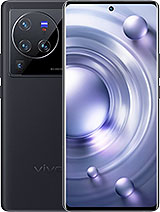In today’s fast-paced world, effective presentations play a crucial role in conveying information, captivating audiences, and making a lasting impact. To elevate your presentations to the next level, projectors serve as powerful tools by projecting your content onto a larger screen or surface. One of the most convenient and widely used methods of connecting your laptop to a projector is through a USB connection. This comprehensive guide aims to demystify the process of How to Connect Laptop to Projector with USB. Whether you’re a student, professional, or presenter, understanding the USB connection method will empower you to seamlessly integrate projectors into your presentations. So, let’s dive into the world of laptop-projector connectivity and unlock the full potential of your presentations.
Preparing Your Laptop and Projector
Before connecting your laptop to a projector using a USB cable, there are a few essential steps to ensure a smooth and successful connection. Follow these guidelines to prepare your laptop and projector:
- Check compatibility: Verify that your laptop and projector are compatible with each other. Check the specifications and requirements of both devices to ensure they can establish a USB connection.
- Install necessary software and drivers: Some projectors require specific software or drivers to be installed on your laptop for proper communication and functionality. Visit the manufacturer’s website to download and install any required software or drivers.
- Gather the required cables and accessories: USB connectivity usually requires a USB cable, so make sure you have one that is compatible with your laptop and projector. Additionally, check if any adapters or converters are needed to establish a proper connection between the two devices.
- Prepare your laptop’s display settings: Adjust the display settings on your laptop to ensure compatibility with the projector. Check the screen resolution, aspect ratio, and orientation to match the projector’s requirements for optimal output.
By taking these preparatory steps, you’ll ensure that your laptop and projector are ready to establish a seamless USB connection. This will lay a solid foundation for a successful presentation and help you avoid any connectivity issues that may arise.
Connecting Your Laptop to the Projector
Now that you’ve prepared your laptop and projector, it’s time to establish the connection using a USB cable. Follow these step-by-step instructions to connect your laptop to the projector:
- Connect the USB cable to your laptop and projector: Locate the USB ports on both your laptop and the projector. Plug one end of the USB cable into the USB port on your laptop and the other end into the corresponding USB port on the projector.
- Adjust display settings on your laptop: Once the USB connection is established, you’ll need to configure your laptop’s display settings. On your laptop, go to the “Display Settings” or “Screen Resolution” option in the control panel or system settings. Choose the appropriate display mode, such as “Extended Display” or “Duplicate Display,” depending on how you want the content to appear on the projector.
- Configure projector settings for optimal output: On the projector, navigate through the menu or settings options to access the display settings. Adjust settings such as aspect ratio, brightness, and keystone correction to optimize the projected image according to your preferences and the presentation environment.
- Test the connection and adjust as needed: Once the settings are configured, test the connection by playing a sample presentation or displaying a test image. If the projected image appears correctly and matches your laptop’s screen, the connection is successful. If not, recheck the USB cable connection and ensure the display settings on both devices are correctly configured.
By following these steps, you’ll be able to establish a reliable USB connection between your laptop and projector. Once the connection is established, you’ll be ready to unleash the power of your presentations on the larger projection screen.
Advanced Connection Methods
While connecting your laptop to a projector using a USB cable is a popular and convenient method, there are also advanced connection options available. Explore these alternative methods to connect your laptop to a projector:
- Wireless connection options: Wireless connectivity offers greater flexibility and mobility during presentations. Some common wireless connection methods include:
- Wi-Fi Direct: Many modern projectors support Wi-Fi Direct, which allows you to establish a direct wireless connection between your laptop and the projector without the need for a separate network. Check if your laptop and projector support Wi-Fi Direct and follow the manufacturer’s instructions to connect wirelessly.
- Miracast: Miracast is a wireless display standard that enables you to mirror your laptop’s screen on a compatible projector. If your laptop and projector both support Miracast, you can establish a wireless connection by enabling Miracast on your laptop and selecting the projector as the display device.
- Wireless dongles: Wireless dongles or adapters can be used to add wireless connectivity to projectors that don’t have built-in wireless capabilities. These dongles usually connect to the projector’s HDMI or USB port and allow you to establish a wireless connection with your laptop using technologies like Wi-Fi or Bluetooth.
- HDMI and other alternative connections: In addition to USB and wireless connections, projectors often have HDMI ports that offer high-definition video and audio transmission. If your laptop has an HDMI output port and the projector has an HDMI input port, you can connect them using an HDMI cable for a seamless digital connection. Other alternative connection methods include VGA, DVI, or DisplayPort cables, depending on the available ports on your laptop and projector.
It’s worth noting that advanced connection methods may require additional setup, configuration, or compatibility checks. Refer to the user manuals of your laptop and projector or consult the manufacturer’s website for detailed instructions on utilizing these advanced connection options.
Troubleshooting and Maintenance
While connecting your laptop to a projector can be a seamless process, there may be instances where you encounter connectivity issues. Here are some common troubleshooting steps to help you overcome such challenges:
- Check cable connections: Ensure that the USB cable is securely connected to both your laptop and the projector. A loose or improperly connected cable can result in a faulty connection. Try unplugging and re-plugging the cable to establish a more secure connection.
- Restart your devices: Sometimes, a simple restart can resolve connectivity issues. Restart both your laptop and the projector and attempt the connection again. This can refresh the system and resolve any temporary glitches.
- Update drivers and firmware: Outdated drivers or firmware can lead to compatibility issues between your laptop and the projector. Visit the manufacturer’s website for both your laptop and projector to check for any available updates. Download and install the latest drivers or firmware to ensure optimal compatibility and performance.
- Try a different USB port: If you’re experiencing connectivity problems, try using a different USB port on your laptop. Sometimes, certain ports may have better compatibility or stronger connections than others.
- Check display settings: Verify that your laptop’s display settings are correctly configured. Ensure that the display mode (e.g., extended display or duplicate display) is appropriately selected. Adjust the screen resolution and aspect ratio to match the requirements of the projector.
Conclusion
In today’s digital age, effective presentations are essential for conveying information and captivating audiences. By connecting your laptop to a projector, you can unleash the full potential of your presentations and create impactful visual experiences. Throughout this comprehensive guide, we have explored the process of connecting your laptop to a projector using a USB cable.
Immerse yourself in the captivating realm of Etech Sense and embark on an extraordinary journey that surpasses the boundaries of our perception. Discover a world where intricate complexities and profound depths converge, revealing enlightening experiences and awe-inspiring brilliance.





